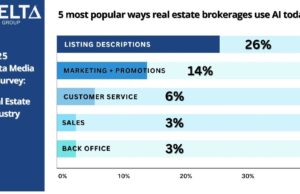Written Testimony of Director Cordray Before the Senate Committee on Banking, Housing and Urban Affairs
WASHINGTON, D.C. – November 12, 2013 – (RealEstateRama) — Chairman Johnson, Ranking Member Crapo, and Members of the Committee, thank you for inviting me to testify today about the fourth Semi-Annual Report of the Consumer Financial Protection Bureau. Since we opened our doors just over two years ago, the Bureau has been focused on making consumer financial markets work better for the American people, and helping them improve their financial lives.
Consumer Financial in National News |
Consumer Financial in Social Media |
The report we are discussing today describes the Bureau’s efforts to achieve this vital mission. Through fair rules, consistent oversight, appropriate enforcement of the law, and broad-based consumer engagement, the Bureau is helping to restore families’ trust in consumer financial markets, protect consumers from improper conduct, and ensure access to fair, competitive and transparent markets.
Through our enforcement and supervisory actions, and together with our fellow regulators, our efforts so far will be putting more than $750 million back in the pockets of millions of consumers who fell victim to various violations of consumer financial protection laws. This includes a refund of over $6 million to tens of thousands of U.S. servicemembers in a case we settled in June that arose from a supervisory examination, based on failure to properly disclose costs associated with repaying auto loans through the military allotments system and expensive auto loan add-on products sold to active-duty military. CFPB’s supervisory actions have also caused financial institutions to make changes to compliance management systems to prevent violations and reduce risks to consumers. In addition, through this process a number of supervised entities have self-identified violations and made financial restitution to many thousands of additional consumers.
Over the past year, we have enacted a number of new rules to meet the mandates of the Dodd-Frank Act, including the Qualified Mortgage rule, which requires mortgage lenders to make a good faith, reasonable determination that borrowers can afford to pay back their loans; the mortgage servicing rule, which is designed to clean up sloppy practices and ensure fairer and more effective processes for troubled borrowers who may face the loss of their homes; and the remittance rule, which is designed to bring new levels of transparency and new consumer protections to international money transfers. Since then, the Bureau has focused on making sure that businesses – both small and large – have what they need from a practical and operational standpoint to understand and comply with our new regulations, which are designed both to help consumers and create a level and fair playing field for companies that play by the rules.
The central concept behind this undertaking is our belief that compliance with regulations is a concern we all share, because successful compliance is good for everyone – consumers, industry, and regulators. So we have put out plain language versions of the rules, created and posted video guidance, met with major market players and the full range of industry stakeholders (including vendors), and made further tweaks to respond directly to industry input about points needing to be clarified or modified to take account of practical and operational concerns. With respect to the mortgage rules, we worked with our fellow regulators to publish inter-agency examination procedures on the new rules, well before the implementation date, to familiarize industry stakeholders with our expectations. With respect to our international money transfer rules, the Bureau has coordinated with other regulators to ensure we all have a shared understanding of the new rules to promote consistent supervision of remittances providers.
At the same time, we recognize that consumers bear their own share of responsibility for how they participate in the financial marketplace. To promote informed financial decision-making, we have continued providing consumers with useful tools, including the AskCFPB section of our website, where we have developed answers to over 1,000 frequently asked consumer questions. In July, we issued our financial literacy report describing the Bureau’s strategy and the financial literacy activities it has undertaken during its first two years of operation. The Bureau is uniquely positioned to help bridge the gap between people’s current levels of financial understanding and the increasingly complex financial decisions they have to make. The Bureau’s financial education agenda is focused on providing consumers with tools and information to develop practical skills and support sound financial decision making. These include tailored approaches to address financial decision-making circumstances for specific populations, including servicemembers and veterans; students and young adults; older Americans; and low-income and economically vulnerable Americans. The Bureau’s strategy to increase consumers’ financial literacy and capability includes foundational research, collaborative education initiatives with stakeholders who can reach consumers where they are, and providing tools and information directly to the public to help them navigate the financial choices they face.
The premise that lies at the very heart of our mission is that consumers deserve to be treated fairly and to have someone stand up when they have been treated unfairly. The Bureau has strengthened its Office of Consumer Response and we have now received more than 230,000 consumer complaints on credit reporting, debt collection, money transfers, bank accounts, and services, credit cards, mortgages, vehicle and other consumer loans, and private student loans since we began taking complaints.
In the past year, we have received thousands of private student loan complaints and nearly 30,000 comments in response to our request for public information about how student debt is affecting individual consumers and the economy more generally. At the field hearing we convened in April on student loan debt, it became clear that too many borrowers took out loans with less attractive rates and terms than they could have qualified for, and many struggle to find refinancing and loan modification options. We have seen too many of these troubling similarities to the broken mortgage market before the crisis, and we will continue to monitor this market closely. The burden of student debt is jeopardizing the ability of young Americans to buy homes, start small businesses, and save for the future.
The progress we have made in the past two years has been possible thanks to the engagement of thousands of Americans who have utilized our consumer education tools, submitted complaints, participated in rulemakings, and told us their stories through our website and at numerous public meetings from coast to coast. Our progress has also resulted from the extraordinary work of the Bureau’s employees – dedicated public servants of the highest caliber who are committed to promoting a healthy consumer financial marketplace. I am proud to work alongside them and to serve now as their confirmed Director. Our progress has been obtained with and through the cooperation of those we regulate, and we attempt to remain considerate of the obstacles they confront. Each day, we work to accomplish the goals of renewing consumers’ trust in the marketplace and ensuring that markets for consumer financial products and services are fair, transparent, and competitive. These goals not only support consumers as they climb the economic ladder of opportunity, but also help responsible businesses compete on an evenhanded basis, reinforcing the stability of our economy as a whole.
Thank you for the invitation to appear before you today. I am, as always, very glad to answer your questions and have the benefit of your active interest and oversight.
###
The Consumer Financial Protection Bureau is a 21st century agency that helps consumer finance markets work by making rules more effective, by consistently and fairly enforcing those rules, and by empowering consumers to take more control over their economic lives. For more information, visit consumerfinance.gov.
By Richard Cordray


















